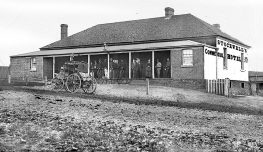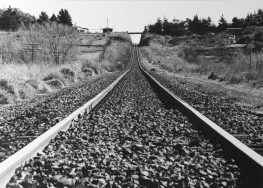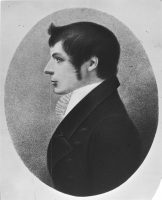Bathurst
The first Europeans, or new colonials, who walked across the Bathurst plains were members of Assistant Surveyor-General George Evans’ party which had set out from Sydney in November 1813, walking in the footsteps of Blaxland, Lawson and Wentworth, then continuing onward to investigate the possibility of building a road over the Blue Mts.
Evans and party returned to Sydney by end of December 1813 and eagerly informed Governor Macquarie of the beauty and potential of the Bathurst plains.
Evans’ glowing accounts of the discovered lands and the newly named Macquarie and Lachlan Rivers encouraged Governor Macquarie to commission William Cox to build a road from Emu Ferry to the Bathurst plains.
Cox set out on his journey from Sydney in 1814, with thirty convicts and eight soldiers to construct a new track terminating on the banks of the Macquarie River. In just six months they built 101 miles (163km) of road through rugged mountain country, constructing over a dozen bridges and splitting hundreds of posts and rails. Evidence of the work completed by these men can still be seen today on the descent from Mount York.
On completion of Cox’s road across the mountains, Governor Lachlan Macquarie lost no time in travelling to the much-talked about Bathurst plains, boasting the river named in his honour.
Accompanied by Mrs Macquarie, staff and soldiers, the governor set out from Sydney in late April 1815, reaching his destination within ten days. The party camped on the banks of the Macquarie River for six days and on Sunday May 7th 1815 the whole company was ordered to gather around the flagstaff on the western bank for the raising of the Union Jack. It was on this site that the intended township of Bathurst was named, after the Secretary of the Colonies, Earl Bathurst.
More information can be found at http://www.bathurstregion.com.au/










